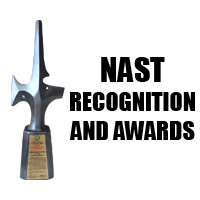RTD on Mortality Data: Gaps and Inadequacies
- Details
The Social Sciences Division (SSD) of the National Academy of Science and Technology, Philippines (NAST PHL) conducted a Round Table Discussion (RTD) on Mortality Data: Gaps and Inadequacies last November 21, 2013 at the Hyatt Hotel Manila. The RTD was organized in consideration of the challenges posted in the generation and consolidation of data on mortality. Reliable data sets are important in the conduct of scientific research needed to benchmark public policies for the improvement of the provision and delivery of health and social services.
In the welcome remarks given by National Scientist Mercedes B. Concepcion, she stressed that the ability to have a complete civil registrationsystem and survey data sets will allow the monitoring of indicators of success in achieving the various Millennium Development Goals (MDGs). This RTD also parallels other efforts being conducted by the SSD of NAST PHL to capacitate primary and secondary stakeholders to improve maternal health and to combat HIV-AIDS, Malaria and other diseases, which are goals of MDGs 4 and 6, respectively.
The first presentation entitled “The Dynamics of the Mortality, Population Growth and Economic Development in the Philippines” was given by Dr. Dennis S. Mapa, Associate Professor and Director for Research of the UP Diliman School of Statistics and Affiliate Associate Professor of the School of Economics. In his presentation, Dr. Mapa stressed that the relation and implication, not only of mortality data sets but, of mortalityper se to socioeconomic facets of society such as population and economic development were reiterated.Demographic Transition, which is characterized by a significant change from high fertility and mortality rates to low fertility and mortality rates, can be facilitated by progressive public policies through government interventions in health services, family planning and education. A stable population will allow room for a more competitive and productive working class yielding higher economic production, thus reducing poverty.An econometric model using regional and provincial data sets was also presented. The model showed causality effects between public efforts and investments on health, education and labor force participation and fertility and mortality rates. Using the model, it can be said that increasing public efforts and investment decreases both fertility and mortality rates and hence, achieving a stable population.
Second Consultative Meeting on Engineering Education Hosted by NAST
- Details
The National Academy of Science and Technology (NAST), in cooperation with the UNESCO, conducted the Second Consultative Meeting on Engineering Technology and Engineering Technician Degree Programs on 19 September 2013 at the Traders Hotel Manila. The meeting was a sequel to last year’s successful launch of the UNESCO project on Engineering Technologist/Technician. It aimed to address and discuss issues revolving around engineering technology and engineering technicians program.
The consultative meeting was led by Acd. Reynaldo B. Vea, chair of the NAST’s Engineering Sciences and Technology Division (ESTD) and concurrent Chair of the UNESCO S&T Committee. He is also the president of the Mapua Institute of Technology. He was joined by Engr. Lyndon R. Bague, member of CHED’s Technical Panel of Engineering Technology and Dean of the College of Engineering, Technological University of the Philippines and Ms. Irene M. Isaac, executive director general of TESDA. Dr. Melito A. Baccay, professor at the College of Engineering, Technological University of the Philippines was tasked to present the synthesis while Acd. Alvin B. Culaba, member of the NAST’s ESTD served as the moderator and master of ceremonies.
Acd. Vea discussed the meshing of the engineering technology and engineering technician academic programs. He discussed the professional competencies required of an engineer, engineering technologists, and engineering technicians. He said engineers are expected to work on complex problems, engineering technologist, are expected to work on broadly defined problems, while engineering technicians are expected to work on well-defined problems. He also presented sample curricula on Civil Engineering Technology and Mechanical Engineering Technology from British Columbia Institute of Technology and Centennial College Toronto citing the scope/coverage of topics or core curriculum needed to be taken in the program. According to him, the Canadian curricula were designed based on the ladderized approach.
Asian Science Academies Advocate for Greener Earth
- Details
The Association of Academies and Societies of Sciences in Asia (AASSA) and the National Academy of Science and Technology, Philippines (NAST PHL) jointly organized the International Symposium on Emerging Technologies for a Greener Earth in conjunction with the First AASSA Executive Board Meeting held on 22-24 October 2013 at the Manila Hotel, Manila, Philippines. Supported by the Global Network of Science Academies (InterAcademy Panel, IAP), the Department of Science and Technology Councils, Department of Agriculture and Department of Environment and Natural Resources from the Philippines, this symposium aimed at providing a venue for discussing recent developments on emerging technologies of the Asian countries to attain a greener earth. Professor Won-Hoon Park, president of AASSA and concurrent chairman of the Korean Federation of Science and Technology Societies (KOFST) Sharing Community of Science and Technology, led the Opening of Poster Session and Exhibits. He was joined by Prof. Namik Aras, vice president of AASSA and National Scientist Mercedes B. Concepcion, vice president of NAST PHL.
National Scientist Concepcion welcomed the participants and thanked everyone for attending the international symposium. She emphasized the important role of AASSA in finding science-based solutions and in creating policy agenda that will guide Asian countries on emerging technologies for a greener society.
National Scientist Concepcion welcomed the participants and thanked everyone for attending the international symposium. She emphasized the important role of AASSA in finding science-based solutions and in creating policy agenda that will guide Asian countries on emerging technologies for a greener society.
In his keynote speech, Professor Park discussed the Role of Current and Emerging Technologies towards Green Economy and Environmental Attainment of the Republic of Korea. He emphasized that “green growth” leads to economic growth, which is essential in keeping the society in balance and the environment clean. He thanked the Philippines for being a good host of the international symposium.
During lunch, Acd. William G. Padolina, president of NAST PHL welcomed the delegates and participants of the symposium and expressed his hope that the results of this international symposium can be used by legislators and policy-makers in providing science-based decisions on emerging technologies that could serve as basis for policy recommendations for a more competitive and greener Asia.
International science experts shared their insights and experiences in the three plenary sessions of the symposium. In the first plenary session, Professor Jinghai Li, vice president of the Chinese Academy of Sciences and member-at-large of the AASSA, talked about Emerging Mesoscience to Enable the Development of Energy Technology, while Professor. Carlo A. Arcilla, director of the National Institute of Geological Sciences at the University of the Philippines Diliman discussed Green Approaches to Mineral Extraction: Philippine Perspectives. Professor Aras moderated this plenary while Dr. Allan N. Soriano of Mapua Institute of Technology was the rapporteur.
For the second plenary session, Professor Chung Bang Yun of the Ulsan National Institute of Science and Technology, Republic of Korea discussed Smart Structures Technologies for Green and Safe Urban Infrastructure Systems, and Dr. Riuping Liu presented Arsenic Pollution Control in China: Technologies, Demo Engineering, and Strategies. Acd. Angel L. Lazaro, member of NAST PHL served as moderator assisted by Dr. Melito A. Baccay of Technological University of the Philippines as the rapporteur.
The third plenary session featured Professor Nikolay Lyakhov, director at the Siberian Branch of Russian Academy of Sciences who discussed Innovative Mechanochemical Bioactive “Green” Preparations of Soluble Silica from Rice Husk and Green Tea for Broiler Industry; Dr. Rabindra Prasad Dhakal, senior scientist at the Nepal Academy of Science and Technology, talked about Novel Bioenergy Approach for Sustainable Development of Nepal; and Professor Youngsook Lee of the Pohang University of Science and Technology, Pohang, Korea presented Genetic Engineering to Remediate Environment Polluted with Heavy Metals. Professor Jennifer Graves, member-at-large of the AASSA Executive Board was the moderator and Dr. Regina C. So of Ateneo De Manila University was the rapporteur.
Professor Aras presented the resulting recommendations of the symposium summarized into resolutions. Acd. Evelyn Mae Tecson-Mendoza, the Academy’s representative to the AASSA, and Acd. Ruben L. Villareal, Secretary and member of NAST Executive Council, respectively, served as masters of ceremonies of the international symposium.
The highlight of the three-day activity was the First Executive Board Meeting of AASSA held in the morning of October 23. Afterwards, the AASSA delegates were given a brief cultural tour of Manila at the National Art Gallery of the National Museum and the historic Intramuros in the afternoon of October 23. On October 24, a visit to the University of the Philippines Los Banos campus, specifically the Makiling Botanic Garden and Biotech Institute, and the nearby International Rice Research Institute was organized for the AASSA delegates.
The international symposium was attended by 150 participants including 25 scientists from the different science academies in Asia and local counterparts in the country. The Association of Academies and Societies of Sciences in Asia (AASSA) is a nonprofit international organization with science and technology interests composed of 34 scientific and technological academies and science societies in Asia and Australasia.
The National Academy of Science and Technology, Philippines (NAST PHL) is the country’s highest recognition and advisory body to the government and science community on issues concerning science and technology.
During lunch, Acd. William G. Padolina, president of NAST PHL welcomed the delegates and participants of the symposium and expressed his hope that the results of this international symposium can be used by legislators and policy-makers in providing science-based decisions on emerging technologies that could serve as basis for policy recommendations for a more competitive and greener Asia.
International science experts shared their insights and experiences in the three plenary sessions of the symposium. In the first plenary session, Professor Jinghai Li, vice president of the Chinese Academy of Sciences and member-at-large of the AASSA, talked about Emerging Mesoscience to Enable the Development of Energy Technology, while Professor. Carlo A. Arcilla, director of the National Institute of Geological Sciences at the University of the Philippines Diliman discussed Green Approaches to Mineral Extraction: Philippine Perspectives. Professor Aras moderated this plenary while Dr. Allan N. Soriano of Mapua Institute of Technology was the rapporteur.
For the second plenary session, Professor Chung Bang Yun of the Ulsan National Institute of Science and Technology, Republic of Korea discussed Smart Structures Technologies for Green and Safe Urban Infrastructure Systems, and Dr. Riuping Liu presented Arsenic Pollution Control in China: Technologies, Demo Engineering, and Strategies. Acd. Angel L. Lazaro, member of NAST PHL served as moderator assisted by Dr. Melito A. Baccay of Technological University of the Philippines as the rapporteur.
The third plenary session featured Professor Nikolay Lyakhov, director at the Siberian Branch of Russian Academy of Sciences who discussed Innovative Mechanochemical Bioactive “Green” Preparations of Soluble Silica from Rice Husk and Green Tea for Broiler Industry; Dr. Rabindra Prasad Dhakal, senior scientist at the Nepal Academy of Science and Technology, talked about Novel Bioenergy Approach for Sustainable Development of Nepal; and Professor Youngsook Lee of the Pohang University of Science and Technology, Pohang, Korea presented Genetic Engineering to Remediate Environment Polluted with Heavy Metals. Professor Jennifer Graves, member-at-large of the AASSA Executive Board was the moderator and Dr. Regina C. So of Ateneo De Manila University was the rapporteur.
Professor Aras presented the resulting recommendations of the symposium summarized into resolutions. Acd. Evelyn Mae Tecson-Mendoza, the Academy’s representative to the AASSA, and Acd. Ruben L. Villareal, Secretary and member of NAST Executive Council, respectively, served as masters of ceremonies of the international symposium.
The highlight of the three-day activity was the First Executive Board Meeting of AASSA held in the morning of October 23. Afterwards, the AASSA delegates were given a brief cultural tour of Manila at the National Art Gallery of the National Museum and the historic Intramuros in the afternoon of October 23. On October 24, a visit to the University of the Philippines Los Banos campus, specifically the Makiling Botanic Garden and Biotech Institute, and the nearby International Rice Research Institute was organized for the AASSA delegates.
The international symposium was attended by 150 participants including 25 scientists from the different science academies in Asia and local counterparts in the country. The Association of Academies and Societies of Sciences in Asia (AASSA) is a nonprofit international organization with science and technology interests composed of 34 scientific and technological academies and science societies in Asia and Australasia.
The National Academy of Science and Technology, Philippines (NAST PHL) is the country’s highest recognition and advisory body to the government and science community on issues concerning science and technology.











